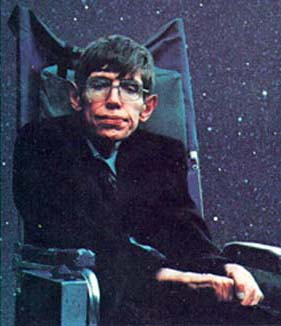Interview with Paul Smith, Author of Integral Christianity: The Spirit’s Call to Evolve
I am really excited to bring this particular podcast episode to you guys this week! It’s a timely release, this being traditionally Holy Week, when Christians around the world reflect on Jesus’ crucifixion and resurrection. It is possible to understand this powerful story as representing the death of deeper, higher orders of Truth at the hands of lower, more shallow truths. Indeed, we see Jesus as a shining example of life lived in the heat of the friction between what we see as the default position of biological evolution and the alternative expression of Creative Evolution. My own personal relationship with Jesus is revealed as I seek daily guidance in understanding my mechanical nature and in allowing my inner creativity to rise to the surface.
So in honor of Holy Week, I am bringing you guys my conversation with Reverend Paul Smith. He has been a pastor at Broadway Church in Kansas City, MO for almost 50 years, and he is the author of a new book called Integral Christianity: The Spirit’s Call to Evolve. Paul and I have a special connection: his church is the first church I ever attended. Born in Kansas City, I went to Broadway Church with my parents until we all moved to Arkansas when I turned 6. Since that time Paul and I both have walked the path of creative evolution, and we both have ended up embracing Christianity in a way few today dare speak about. Have a listen to our dialogue, and by all means pick up a copy of Paul’s book today! E-mail me or comment on the post below if you have any thoughts about our discussion.
Alternative content
Download To Your Computer (runs about forty-five minutes)
- Introduction — 00:00 – 02:12
- The Three Faces of God — 02:12 – 11:45
- Reading the Bible as a Stage-Development Chronicle — 11:45 – 15:25
- Jesus, Lazarus and Creative Evolution — 15:25 – 26:03
- Where We Were, Where We Are, and Where We’re Going — 26:03 – 33:45
- Paul’s Background — 33:45 – 42:07
- Closing — 42:07 – 44:12
From Asana to Vinyasa to Prasara: The Evolution of a Modern Yoga Practice

Over the past 12 years or so, my yoga posture practice has changed dramatically. It all began when I walked into a Barnes and Noble bookstore in college and bought a beginner’s yoga book published by the Sivananda Yoga Center. The posture practice was a pretty standard, well-ordered sequence of asanas, preceded by one vinyasa (surya namaskar). This took me a long way toward exploring myself within the postures, but it wasn’t until I discovered “Power Yoga” that I found a way to become more immersed in some sort of connected flow through the entire practice.
During this time period (about eight years ago) I also discovered Godfrey Devereux’s Dynamic Yoga Method. Combining the energetic qualities of the bandhas and the spirals with the connective possibilities of vinyasas between asanas, I really felt like I had a fantastic, even fluid practice. However, it wasn’t until until the next novelty in my practice emerged that I discovered how truly connected and fluid a yoga posture practice could be.
Physical Disabilities, Motor Neuron Disease, and the Development of the Physical Body
“I am quite often asked: How do you feel about having ALS? The answer is, not a lot. I try to lead as normal a life as possible, and not think about my condition, or regret the things it prevents me from doing, which are not that many.”
– Steven Hawking
It may seem disingenuous to characterize physical development simply in terms of diet/nutrition, primal movement, and posture practice. The reality is that at least two of these strategies are completely dependent upon reasonable physical health. This might seem to mean that a large segment of the population – those with certain physical disabilities – would be rendered unable to participate in these activities and would therefore be unable to foster the kind of development in the physical realm that we talk about here at myCreativeEvolution.com.
I say, Not so fast. Let’s take a closer look:
A student brought up the specific example of Steven Hawking at a recent intensive retreat. We were discussing the model of the human being as having three aspects – the mind, the body, and the spirit – each requiring work in order to insure balanced development. His question was, “What about Steven Hawking? He can’t move his body at all? Can his development ever be seen in this model as balanced?”
Get Updates Via E-Mail
What We Do
Start Here
Posts by Dimension
Posts by Subject
Posts by Practicality
Recent Posts
- Interview with Paul Smith, Author of Integral Christianity: The Spirit’s Call to Evolve
- Integrating Asana, Vinyasa, and Prasara in Yoga Posture Practice
- The Highly Played Game of As If – Episode One: The Miracle at the Pool of Bethesda
- Introducing “The Highly Played Game of As If”
- From Asana to Vinyasa to Prasara: The Evolution of a Modern Yoga Practice




